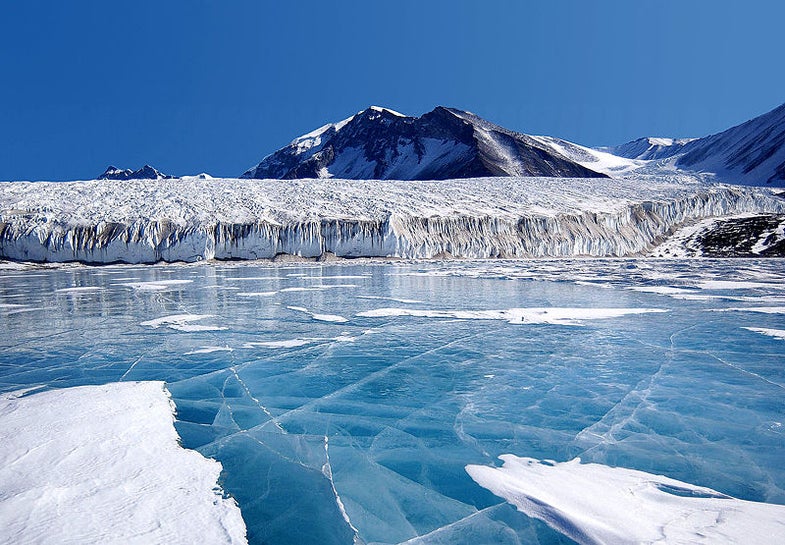Recovery of Ozone Hole May Increase Antarctic Warming
One step forward, one step back.

The good news is that the ozone hole over Antarctica is slowly healing, thanks to controls on ozone-depleting substances that were once widely used in products such as refrigerators and aerosol cans. Stratospheric ozone protects us from harmful ultraviolet radiation that can cause problems such as skin cancer and crop damage.
Unfortunately, the recovery of the ozone hole has a dark side: The return of a thin, suspended blanket of stratospheric ozone will raise temperatures over the southern polar region, according to a new study by scientists at the University of Colorado at Boulder, the National Oceanic and Atmospheric Administration, and NASA Goddard Space Flight Center. The scientists, who relied on a NASA computer model for their predictions, also report that the healing of the hole will weaken winds that currently shield the Antarctic interior from warmer air masses to the north.
Antarctica may not be the only continent affected: The researchers also found that the changes in air circulation caused by ozone recovery could mean wetter conditions during late spring and early summer in southern South America, and warmer and drier weather in Australia—which is already suffering from a long drought.
While average temperatures in most places on the globe have been increasing, the interior of Antarctica has experienced cooler summers and autumns. “We may finally see the interior of Antarctica begin to warm with the rest of the world,” says Judith Perlwitz, the lead author of the study, which will be published in the journal Geophysical Research Letters on April 26.